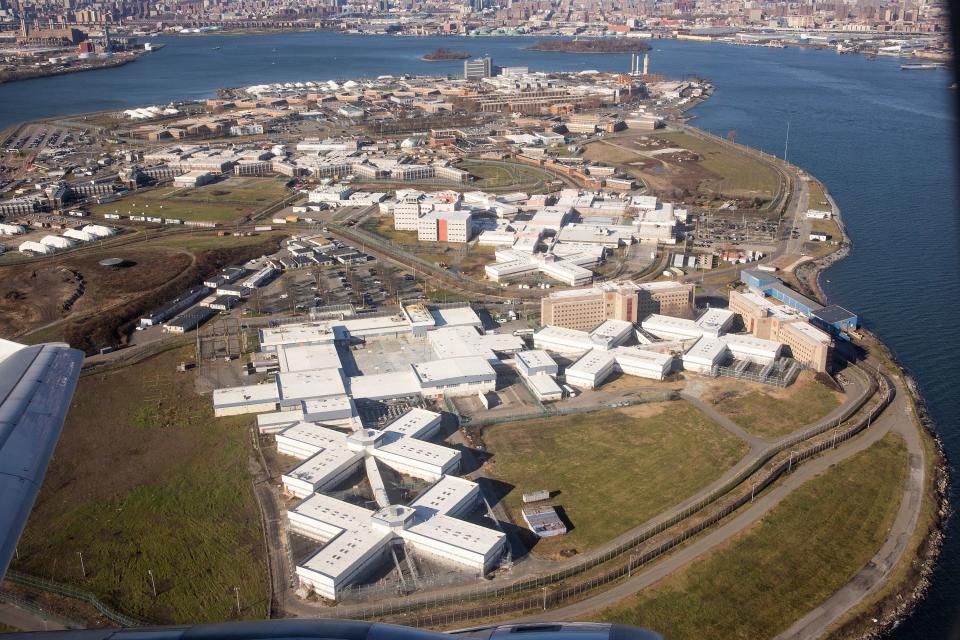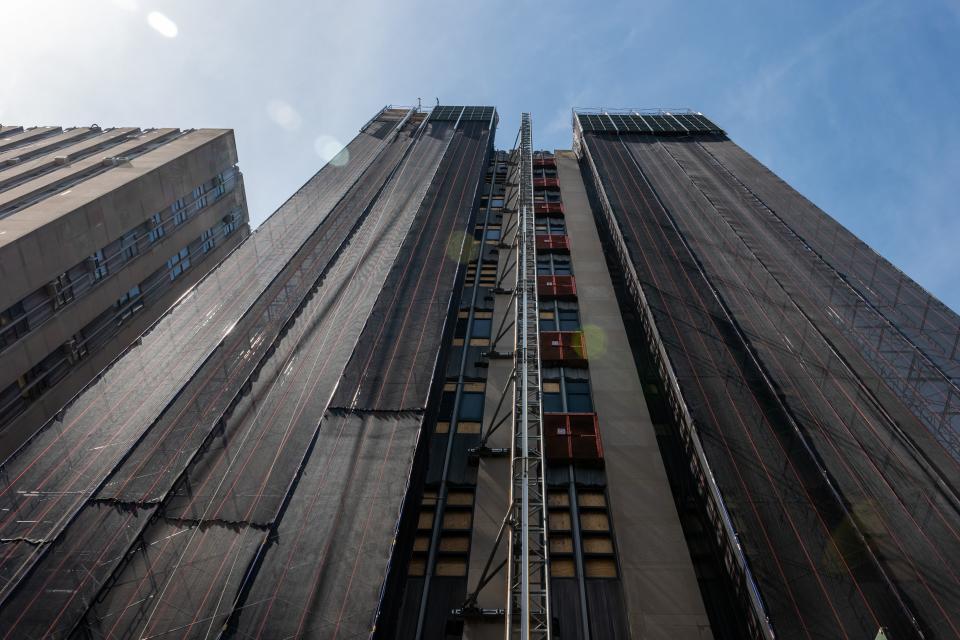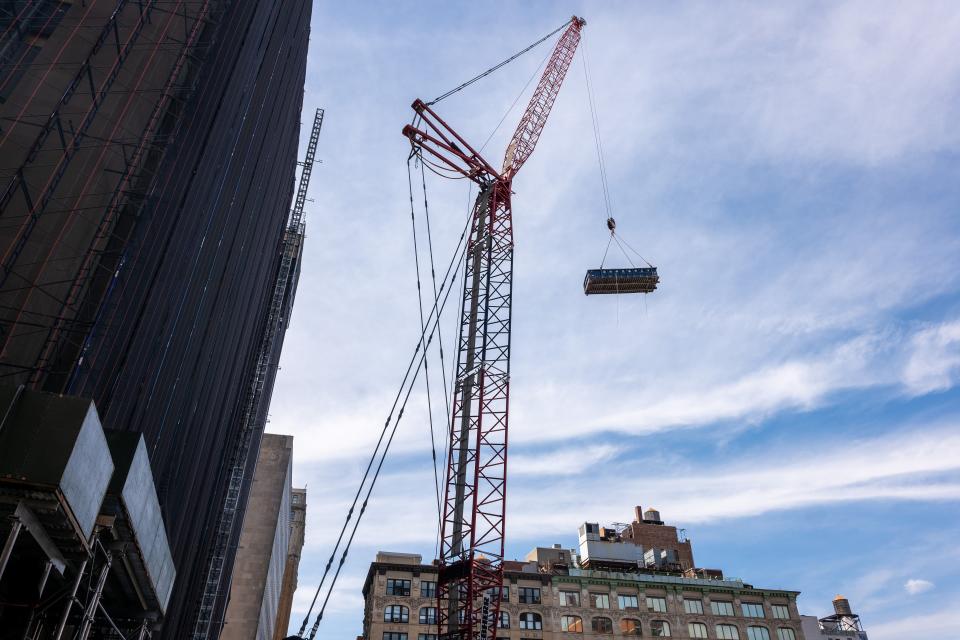Why the World’s Tallest Jail in New York City Is So Controversial

Photo: Getty Images
A Brutalist structure and Art Deco monolith—together known colloquially as The Tombs—aren’t the first jails to preside over downtown Manhattan. Towering above a senior center and a leafy community park, this site in New York City has long been dedicated to incarceration, since the original Egyptian Revival–styled jail opened on the premises in 1838. Though the current architecture no longer resembles the ancient mausoleums of Egypt, the nickname The Tombs still resonates. Now, with New York City’s criminal justice reform program underway, The Tombs—formally the Manhattan Detention Complex—are undergoing another demolition, making way for what could be the world’s tallest jail.
Dubbed by locals as The Jailscraper, it’s projected to stretch 300 feet in the air, about the height of NYC’s Statue of Liberty or London’s Big Ben. “It’s a nightmare. For generations, Chinatown has been overshadowed by jails,” said Jan Lee, cofounder of Neighbors United Below Canal, a group of thousands of residents, businesses, and stakeholders who oppose the new detention center. “Our focus should be on safety, scale, and preserving the unique cultural identity of Chinatown. It’s a neighborhood defined by its rich heritage, not by a hazardously constructed jail that threatens its surroundings.”

The Tombs’s demolition is part of the city’s larger Borough-Based Jails Program, a seismic initiative to close Rikers Island and replace the city’s largest jail complex with four new jails in various communities. The new jails are to be designed with less harsh materials, while also providing more sunlight, greenery, and programming space. What’s more, the idea is to also place the jails geographically closer to loved ones, attorneys, and courthouses. “Placing future jails in urban areas close to communities opens possibilities for local businesses and schools to actively engage in these rehabilitation efforts,” says Martin Stigsgaard, a neighbor of the Chinatown jail, professor at Spitzer School of Architecture CCNY, and principal architect of Studio Stigsgaard. “Incarceration should be a chance to help incarcerated people refocus and reintegrate into society.”
The Borough-Based Jails program is expected to cost $15 billion, according to the mayor’s budget director, Jacques Jiha, nearly double the original price tag. Some New Yorkers believe the city may have gone too far. “High-rise buildings are used, obviously, because space is so limited in the city, but at a cost,” says Richard Wener, a member of the city’s Closing Rikers Implementation Task Force and author of The Environmental Psychology of Prisons and Jails. “Most of the [task force] members were concerned about the jails getting too big—because of the difficulties in maintaining control and contact with staff and detainees as overall size grows. Technically a building can keep adding floors indefinitely, but increased size can make the facility more difficult to manage in a humane manner.”

Meanwhile, locals say the demolition in downtown Manhattan is wreaking havoc on the community. Large cracks are forming in the wall of the adjacent Chung Pak senior housing center, residents are shutting their windows to block the debris, and businesses are worrying the lack of foot traffic may mean having to close their doors.
“Although the jail has a long-standing history at this location, opting to reconstruct it—and even enlarge it—reflects a lack of engagement with the community’s needs,” adds architect Martin Stigsgaard. The firm in charge of The Jailscraper has not been announced, but the Brutalist jail has been razed, with the Art Deco–style jail next. (Artists’ murals and detailed friezes of immigrant stories were lost in the demolition process.) Many locals are concerned about the final design of the jail, as it remains unknown.

The Borough-Based Jails program, spearheaded by the city’s Department of Design and Construction, presents an existential question: Can America use design to solve its mass incarceration problem? Many justice architects—those who design jails, prisons, courthouses, and police stations—and advocates of new jails contend that creating “more humane” settings can help ease recidivism rates, prepare the incarcerated for a better future once released, and offer a better environment for staff.
Those who oppose new jails, such as prison abolitionists, argue that new jails propel a criminal justice system that is fundamentally racist, classist, and harmful to society, and that more needs to be done to prevent incarceration in the first place.
“We remain committed to completing the Borough-Based Jail project in Chinatown,” says Liz Garcia, Deputy Press Secretary at New York City Mayor Eric Adams’s office, “which is what we must do to protect public safety, provide humane conditions for those in custody, and close the jails on Rikers Island—there is simply no other path forward.” The Borough-Based Jails are slated for completion in 2029. The city’s jail population—80% of which are awaiting trial—is currently being held on Rikers Island, where 31 people have died since Mayor Eric Adams took office.
Originally Appeared on Architectural Digest

